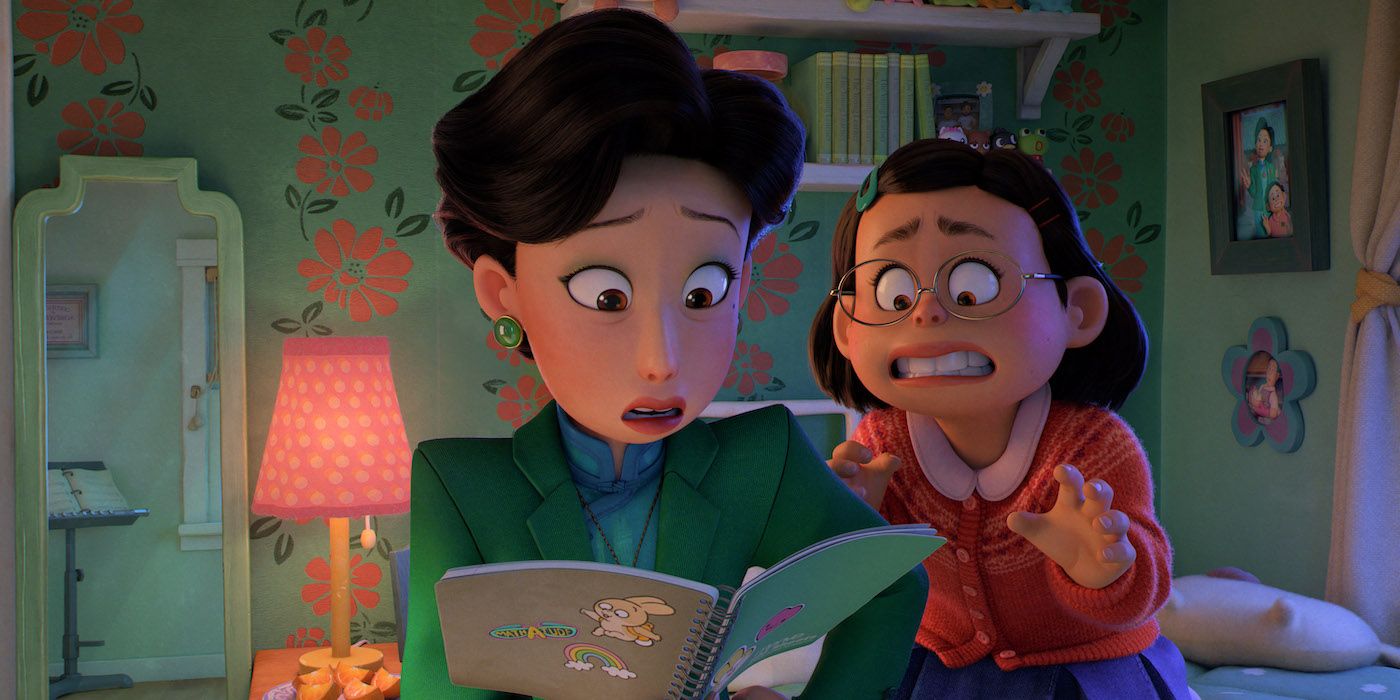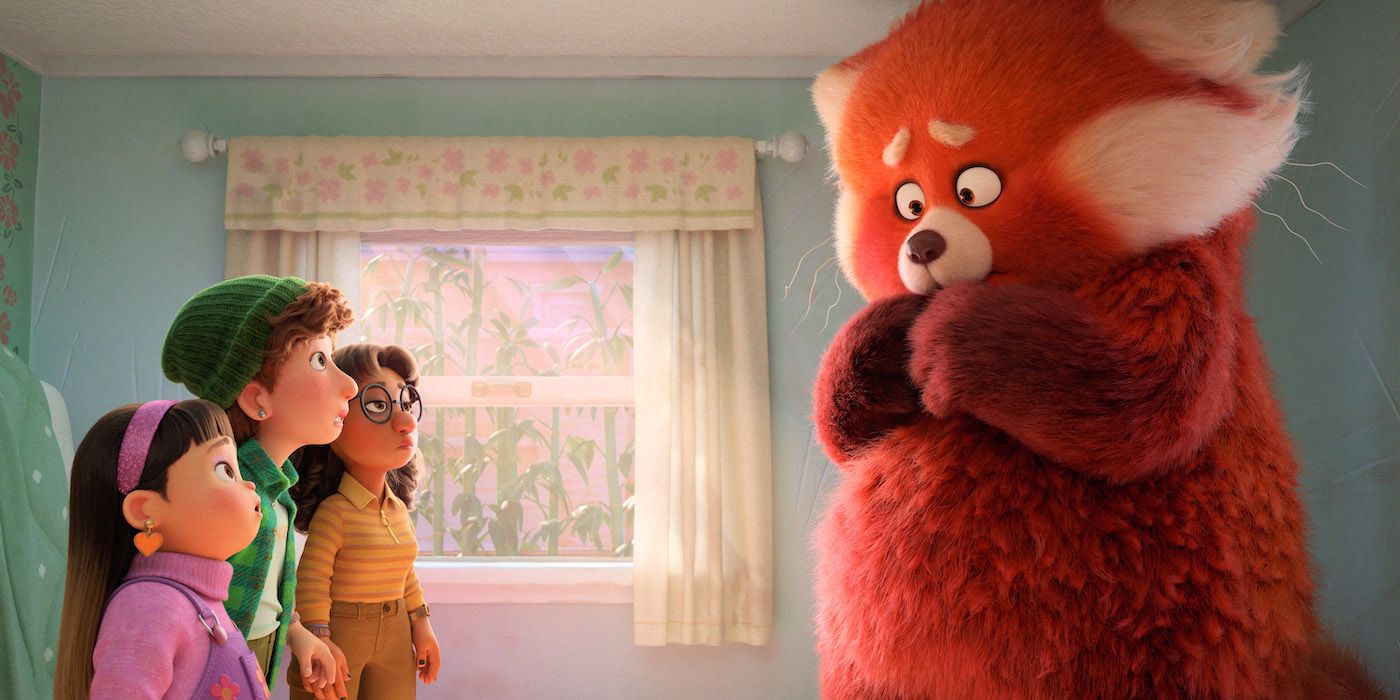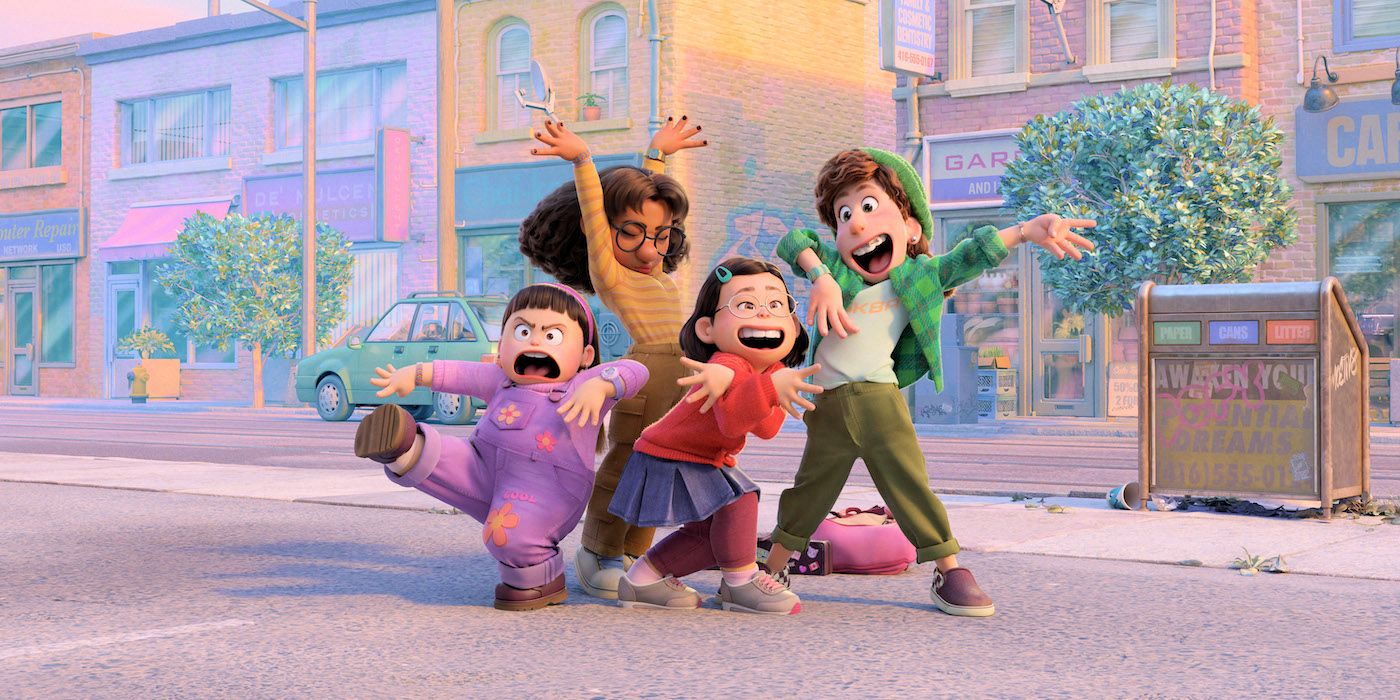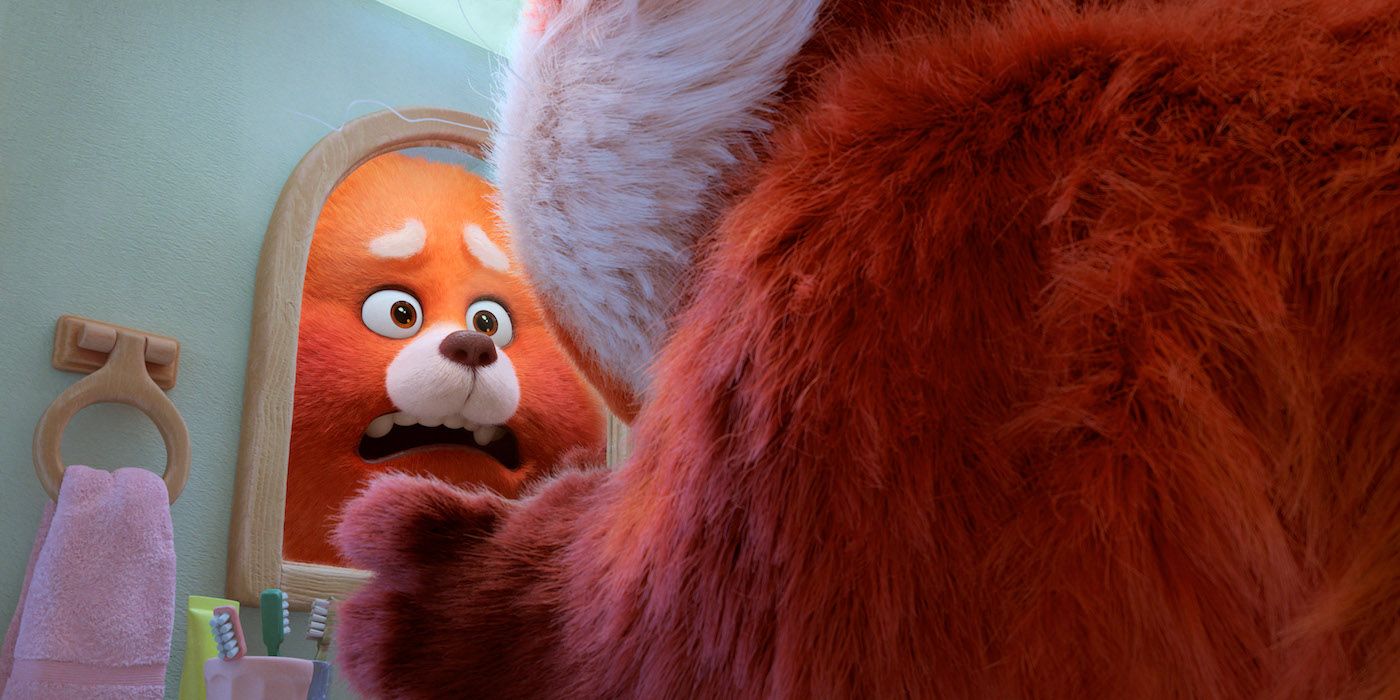Warning: This post contains spoilers for Turning Red.
Turning Red ending explained in detail. The latest Pixar animation, directed by Domee Shi from a screenplay by her and Julia Cho, is bursting with energy, heart, and nostalgia. Thought to be headed for a theatrical run, Turning Red released on Disney+ March 11 and features the voice talents of Sandra Oh and Rosalie Chiang.
Set in 2002, Turning Red follows the story of Meilin “Mei” Lee, a 13-year-old who is close to her overprotective and overbearing mother Ming and wants nothing more than her approval. On the flip side, Mei is also confident and loves her friends, but feels she can’t share parts of her life with her mom. As she enters adolescence, her whole life changes in more ways than one after an embarrassing debacle leads to her transformation into a fluffy, giant red panda.
Turning Red is as much about growing up as it is about how that affects the relationship between mother and daughter. The film is unique and has a lot of layers to explore — so we break down the ending, including why Mei decides to stay a red panda, and more.
Turning Red Explores Generational Trauma
At the heart of Turning Red is the relationship between Mei and her mother Ming. The two are inseparable, but the film shows how distant Mei starts to feel from her mom as puberty and adolescence set in. Crucially, Turning Red explores the generational trauma and rifts between mothers and daughters. Ming is overprotective and overbearing toward Mei because of the strained relationship she had with her own mother, who disapproved of her marriage to husband Jin. Ming’s transformation into the giant red panda tested her bond with her mother and created a rift that never fully healed. Mei experiences the same thing with Ming, whose approval she wants the most out of everyone. However, Mei doesn’t truly feel seen and Ming doesn’t quite know how to handle and accept the changes Mei is going through.
Trying to control her daughter and laying the blame on everyone else is the only way she knows how to keep her close. Mei ultimately breaks the cycle of trauma because she is able to confront Ming in a way neither she or her sisters were able to do with their own mother. Mei fully embraces herself and accepts that her changing relationship with her mom isn’t a bad thing, it just takes some adjusting. And even though she will never again be the daughter who is constantly trying to please Ming, her transformation into a red panda and the pains of growing up don’t have to create so much distance between them that they don’t talk or remain close to some extent.
Why Mei Decides To Keep The Red Panda (& Why Her Family Doesn’t)
Mei was freaking out about her turn into the red panda — and who wouldn’t be? While Ming revealed there was a darkness to the red panda, which only grew in strength the more she transformed into it before the ceremony, Mei was able to control her emotions enough so that she could become the red panda on her own terms. Over the course of Turning Red, Mei became comfortable with the red panda and grew in confidence with regards to the changes to her body and growing up. While Ming, her grandmother and aunts still lived in fear of the red panda and the emotional turmoil that seemed to come with it, Mei was finally at peace with her red panda by the end of the film.
She saw it as a strength, not a weakness, and fully embraced who she was, the two different sides of her, and the pains of growing up and the changes that came along with it. While Mei didn’t know exactly what awaited her following her decision to keep the red panda, she realized she had to figure that part out on her own and that the panda wasn’t something she should hide away. It was a part of her now and she accepted that, as well as the responsibility that came with it. Her family, on the other hand, had already lived for many years having closed that part of themselves off. Ming, her sisters, and mother didn’t embrace the red panda in the ways Mei did and so it made sense for them to return the panda spirit and carry it with them instead.
Turning Red’s Mythology: Are Red Pandas Important?
Turning Red sees Mei becoming a red panda because of a mystical and ancient family history. Mei’s ancestor, Sun Yi, channeled the spirit of the red panda, harnessing her emotions and turning into the panda’s physical form to protect her village and family. In mythology, red pandas don’t have as much of a central importance or mythological effect as the regular black and white pandas, but they are considered symbols of balance, protection, and patience. Seeing a red panda also suggests one should rely on themselves to be happy instead of pleasing others, which is something Turning Red deals with directly. Since the red panda is a unique animal, like a cross between a panda and fox, its spirit animal symbolism often relates back to a sense of individuality. It is said that if one sees the red panda as a spirit animal, then there is turmoil in one’s life — Mei can relate to this as she goes through her changes. During a press conference for Turning Red, director Domee Shi stated the red panda was chosen as, “an adorable metaphor for the scary, unadorable, awkward, and cringey changes we go through during this age.”
Why Turning Red Is Set In 2002 Instead Of The Present
Director and co-writer Domee Shi took inspiration from her own relationship with her mother, as well as that of her friends and family, which is why Turning Red is set during the early aughts instead of the present day. The year the film takes place is representative of Shi’s own adolescence, which is a crucial part of the film. It also adds a sense of nostalgia for millennials who tune in to watch — boy band obsession, face band-aids as fashion, and Tamagotchi virtual pets were all the rage back then. All of these things add to the specificity of Turning Red and allows Mei and her friends to feel more like fully realized teens who are growing up and changing. What’s more, the time period allows for a simpler story to be told, one that isn’t complicated by tweens being on social media and the like (they still had flip phones in 2002).
Turning Red Ending’s Real Meaning Explained
Turning Red touches upon several themes; its central one is that emotions and bad stuff that happens shouldn’t be pushed away, but embraced. It’s why Mei being a panda works for her — she doesn’t shy away from her feelings or confronting her mother in the end, even if she doesn’t know how things will necessarily pan out or if their relationship will be better or worse because of it. It’s also about the acceptance of change and the realization that Mei can’t keep working to please her mother because it will only make her miserable over time. Mei recognizes and welcomes the changes that are happening to her by the end of Turning Red. While she’s still scared that staying a red panda will take her away from Ming, she still decides not to hide that part of her. It’s a courageous decision and, as she steps into the unknown, her lack of hesitance in embracing her growing pains and the changes that come with it allows Ming to open up and leave her own comfort zone in response.






